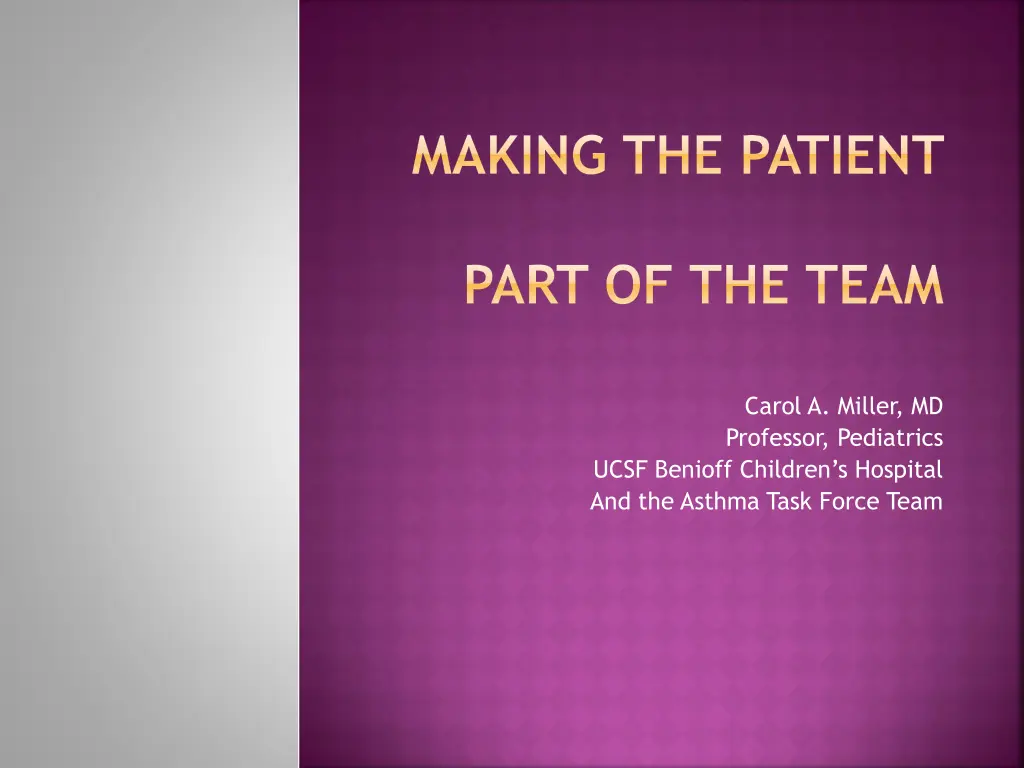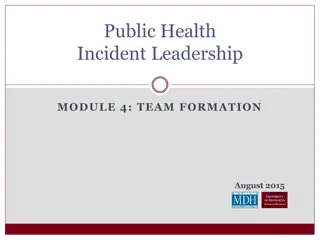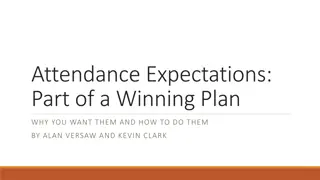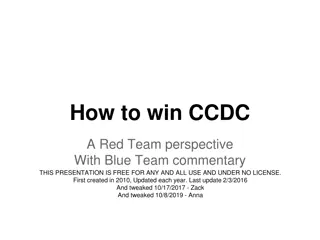
Improving Asthma Care Communication Strategies
Enhance your communication skills in asthma care with the LEARN model. Learn effective strategies for addressing communication obstacles, listening to patients, and empowering them for better self-management. Explore the prevalence and burden of asthma, as well as the essential principles of EPR-3 asthma care. Asthma education should start at diagnosis and involve the entire healthcare team for comprehensive patient care.
Download Presentation

Please find below an Image/Link to download the presentation.
The content on the website is provided AS IS for your information and personal use only. It may not be sold, licensed, or shared on other websites without obtaining consent from the author. If you encounter any issues during the download, it is possible that the publisher has removed the file from their server.
You are allowed to download the files provided on this website for personal or commercial use, subject to the condition that they are used lawfully. All files are the property of their respective owners.
The content on the website is provided AS IS for your information and personal use only. It may not be sold, licensed, or shared on other websites without obtaining consent from the author.
E N D
Presentation Transcript
MAKING THE PATIENT PART OF THE TEAM Carol A. Miller, MD Professor, Pediatrics UCSF Benioff Children s Hospital And the Asthma Task Force Team
PATIENT COMMUNICATION Really Talking with and Hearing Patients to Improve Self-Management, Symptom Monitoring, and Overall Asthma Control
AGENDA LEARN model of communication Demonstration role-plays (Break) Audience participation; communication practice exercises Debriefing and summary
OBJECTIVES Describe the LEARN model for communication Learn strategies for addressing communication obstacles with patients Practice communication skills Listening to patients Improving patients understanding and acceptance developing a partnership with patients Improve skills to facilitate patient empowerment in asthma management
ASTHMA PREVALENCE State prevalence: 14.8/100 population = 1,404,000 individuals Counties range: Marin 8.5 to San Jaoquin 28.1 San Francisco 14.9
DISEASE BURDEN Annual cost: $18 billion Hospitalizations: $10 billion Illness and death: $8 billion Lost days from school: 14 million days per yr (ref. Asthma and Allergy Foundation of America)
EPR-3 PRINCIPLES: ASTHMA CARE Measures of assessment and monitoring, obtained by objective tests, physical examination, patient history and patient report, to diagnose and assess the characteristics and severity of asthma and to monitor whether asthma control is achieved and maintained Education for a partnership in asthma care Control of environmental factors and comorbid conditions that affect asthma Pharmacologic therapy
ASTHMA EDUCATION SHOULD: Begin at the time of diagnosis and continue through followup care . Involve all members of the health care team . Introduce the key educational messages by the primary provider, and negotiate agreements about the goals of treatment, specific medications, and the actions patients will take to reach the agreed-upon goals to control asthma . Reinforce and expand key messages (e.g., the patient s level of asthma control, inhaler techniques, self-monitoring, and use of a written asthma action plan) by all members of the health care team Occur at all points of care where health professionals interact with patients who have asthma, including clinics, medical offices, EDs and hospitals, pharmacies, homes, and community sites (e.g., schools, community centers) .
E D U C A T I O N F OR A P A R T N E R S H I P I N A S T H M A C A R E Asthma self-management education Education should be integrated into all aspects of asthma care and it requires repetition and reinforcement
ADHERENCE BARRIERS Fear of medication use Disease denial Parental guilt (child with asthma) Unaware of risks of non-control Misunderstanding of the recommendations Language barriers Underestimation of the significance of symptoms Non-medical social factors Other communication barriers
L.E.A.R.N. L Listen with sympathy and understanding to the patient's perception of the problem E Explain your perceptions of the problem A Acknowledge and discuss the differences and similarities R Recommend treatment N Negotiate agreement
LISTEN attempt to elicit the patient s perspective Sample questions: What do you feel maybe causing your problem? How do you feel the illness is affecting you? What do you feel might be of benefit?
EXPLAIN clear, easy to understand language consistent terminology and explanations (ref EPR-3) professional interpreters may be necessary
ACKNOWLEDGE In a non-judgmental manner, acknowledge the patient s perspective. Point out areas of agreement, correct inaccuracies of understanding, be willing to incorporate the patient s model of care if it will not lead to harmful decisions about care.
RECOMMEND Look for ways to incorporate both the provider s and the patient s explanatory models into the treatment recommendations. Openness to cultural practices is encouraged.
NEGOTIATE Form a partnership with the patient to develop the care plan Options should be identified and considered Unique psychosocial, cultural, or life circumstances should be incorporated
SCENARIO A 6-year old boy with moderate persistent asthma. His mother and one of his cousins also have asthma and live the same apartment in the Bayview district. The child has had itchy eyes and a cough/ difficulty breathing daily. Symptoms occur both during the day and night.
DISCUSSION What is (are) the major medical concern(s)? Identify the knowledge gaps. Is there a communication break-down? Describe. Give feedback to the provider: Positive points Suggestions for improvement
CASE STUDIES: GROUP EXERCISE






















